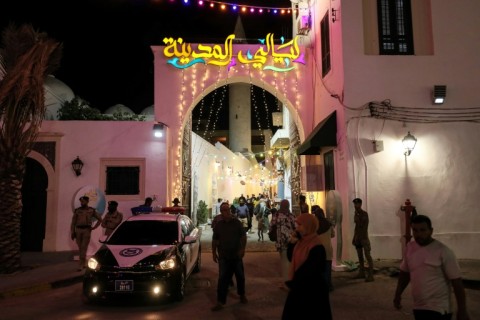Libya lights up after years of power cuts
Libya lights up after years of power cuts After years of conflict and power cuts, Libya's capital Tripoli has seen a dramatic turnaround in its daily lives since the fall of Moamer Kadhafi in a NATO-backed 2011 uprising. The General Electricity Company of Libya (Gecol) resorted to widespread power cuts over the past 10 years during the peak consumption periods of summer and winter, leaving residents sweltering in summer temperatures above 40 degrees Celsius without air conditioning. Despite this, the city has been restored to normal conditions, with residents enjoying a return to normal life.

Được phát hành : 2 năm trước qua eNCA trong Business
MILAN - It's midnight just before the weekend. Traffic snarls the corniche in Tripoli, where improved electricity service has brought renewed energy to Libya's capital after years of conflict and power cuts.
Chronic electricity shortages had shaped the daily lives of Libyans since the fall of Moamer Kadhafi in a NATO-backed 2011 uprising.
A decade of stop-start fighting between rival armed groups followed, adding combat damage and looting to an already dilapidated grid in the North African country.
Power "outages were a disaster for my business", said Hanan al-Miladi, a 43-year-old baker who sells pastries online for weddings and other celebrations.
After 42 years in power, Kadhafi left behind obsolete infrastructure, an economy largely dependent on oil, and an underskilled workforce.
To protect the network and prevent overloads, the General Electricity Company of Libya (Gecol) resorted to widespread power cuts over the past 10 years during the peak consumption periods of summer and winter.
Until last year, outages could last 10 or even 20 hours, turning the city's streets dark and leaving residents sweltering in summer temperatures above 40 degrees Celsius (104 Fahrenheit) without air conditioning.
